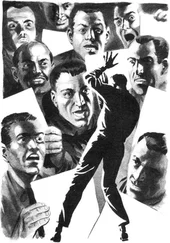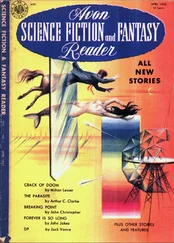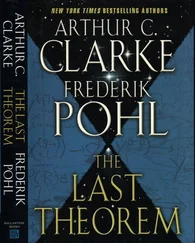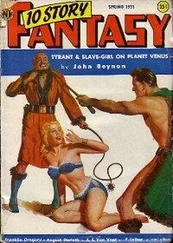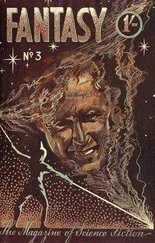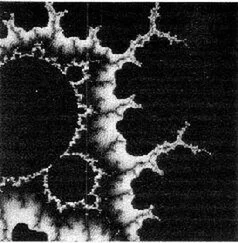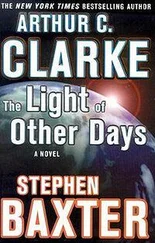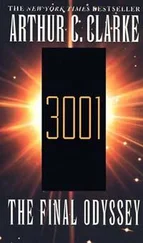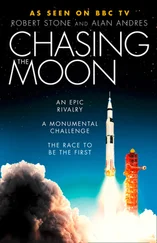"I don't believe in cultural shock," said Hunter. "After all, we expect to meet a very advanced society. It wouldn't be such an overwhelming surprise to us as-well, as it would be to him, if he was suddenly dumped here in Manhattan ."
"I think you are too-optimistic," answered Dr. Brailsford; Bowman guessed that she had been tempted to use the word "naive." "On our planet, societies only a few generations apart culturally have proved to be incompatible."
"Perhaps our Pleistocene astronauts were aware of the danger-perhaps that's why they've left us alone, all these years."
"Have they?" said the anthropologist. "I wonder. If you'd like to come to my office now, I've something to show you."
They walked out of the Leakey Memorial Exhibit, through the great, cathedral-like halls of the museum. From time to time Bowman was recognized by other visitors, and several eager youngsters rushed up for his autograph. Goode and Hunter were not asked for theirs, but they were accustomed to this; Goode was fond of quoting, a little ironically, Milton 's line "They also serve who only stand and wait."
Bowman's relationship with his two understudies was, on the whole, excellent-which was not surprising, for their intellectual and psychological profiles had been matched with great care. They were colleagues, not competitors, and they were often able to act as his alter egos, reporting back to him after missions and trips which he was too busy to make. Of course, each hoped that he would be the one finally selected, but they served Bowman loyally and with the minimum of friction. They had had disagreements, but never a serious quarrel-and so it had been with the other five trios. The psychologists had done their work well; but by this time, they had had plenty of practice.
Every time he entered a place like the Natural History Museum, Bowman was overwhelmed by the infinite variety of life produced by evolution on a single world, this one planet Earth. As he walked past the great displays with their panoramas of scenes from other times and other continents, he realized again the sheer foolishness of the question he was so often asked about the builders of the pyramid: "What do you think they looked like?"
Even if one were given every relevant fact about Earth's climate, geography, atmosphere, and chemical composition, who could have predicted the elephant, the whale, the giraffe, the giant squid, the duck-billed platypus-or Man himself? How infinitely more impossible it was, therefore, to make sensible guesses about the inhabitants of a totally unknown, and perhaps quite alien, planet! Yet it was equally impossible to stop trying….
Dr. Brailsford's office was that of any museum curator– piled high with books, reports, journals from other institutions, exhibits being packed and unpacked, and hundreds of small drawers which covered two whole walls. On her desk were several skulls; she picked up one and said: "Here is the gentleman we have been talking about; not much of a forehead yet, but he's taken the first step toward us. And I mean first steps; even today, none of the other anthropoids are good walkers."
She placed the skull reverently back into its bed of cotton wool, then began ruffling through the folders drawings, maps, and photographs on her crowded desk. Presently she dug out a large book,* opened it at a marker, and handed it over to her visitors.
*The Search For the Tassili Frescoes, Henn Lhote
"My god!" said Hunter. "What the devil is that?"
"That" was a line drawing of a looming, roughly anthropomorphic figure, shown from the waist up. The head appeared to be covered by some kind of helmet, in the center of which was a large, Cyclopean eye. Another, smaller eye was tucked away in one corner of the helmet there were no other features, and by no possible distortion or artistic license could it be converted into a human face.
"Thought-provoking, isn't it? It's a Paleolithic cave painting, found in the Sahara half a century ago-back in 1959. And it made such an impression on the discoverers that, believe it or not, they christened it the 'Great Martian God."
"How old is it?"
"About ten thousand years. Not very old compared with your TMA-1-but ancient enough by human standards."
There was a long and profound silence while the three astronauts studied the painting. Then Hunter asked: "Do you really think it's a record of a meeting with extraterrestrials?"
"Frankly, no. It's probably a medicine man or witch doctor wearing some peculiar hairdress. I should have mentioned that it's extremely large-about eighteen feet high-so the artist obviously considered it quite important."
"Or it was something that made a big impression on him. I guess a spacesuit back in the Stone Age would create a sensation."
"Not necessarily, you should see a New Guinea devildancer in full regalia. But I think we can draw a lesson from this; just suppose it was a visitor from space, wearing some kind of protective suit. Granted that, I think you'll agree that the Stone Age artist did a fine job of recording something utterly incomprehensible, and beyond the farthest limits of his own culture. Could you do as well, if you encountered a supercivilization?"
"Perhaps not-but at least we have cameras."
"Even in photographs, you can only recognize things you already know. The shapes and colors of a really advanced civilization might be so strange that we might go mad trying to interpret them. Its time scale, too, might be incompatible with ours-faster, for example. Suppose you put Australopithecus in a car and drove him at high speed down Broadway one night. What sense would he make of it?"
"I see your point," said Bowman. "So what should we do, if we ever find ourselves in a similar situation?"
"I would say-try to become a passive recorder of events, and not attempt to understand anything. Take as many photographs as possible. And, of course, hope that the entities you meet are patient, and aware of your limitations."
"And if they are not?"
"Then I am afraid you will survive just about as long as Australopithecus would-if he got out of the car and tried to cross Broadway against the lights."
The weeks of preflight checkout in orbit went smoothly and uneventfully, as they were supposed to do. There was only one moment of drama and emotion: the christening of the ship.
Officially, most spacecraft have only numbers. Unofficially, they all have names, as ships have since the beginning of time. This one, the astronauts decided, would be called Discovery, after the most famous of polar exploration ships. It seemed appropriate, for they were going into regions far colder than the South Pole, and the discovery of facts was the sole purpose of their mission.
But how does one christen a spaceship, in orbit two hundred miles above the earth? The traditional champagne bottle was obviously out of the question, and the distinguished ladies who were expected to wield it would balk at carrying out the ceremony while floating around in spacesuits. Some kind of compromise was necessary.
Almost eighteen times a day, the ship passed directly above every point on the equator. The largest city beneath its path was Nairobi , and here, at night, the christening took place.
The lights of the city were extinguished, and all eyes were turned to the sky, when the world's First Lady made a brief speech of dedication and, at the calculated moment, said, "I christen you Discovery." Then, with all eyes upon her as she stood regal and resplendent in her tribal robes, the Secretary-General pressed a switch.
Directly overhead, a dazzling star burst into life-the billion-candlepower flare that was drenching both Space Station One and Discovery with its brilliance. It moved slowly from west to east while the whole world watched-both from the ground, and through cameras on the station. The fastest vessel built by man had been christened by the swiftest of all entities, light itself.
Читать дальше

